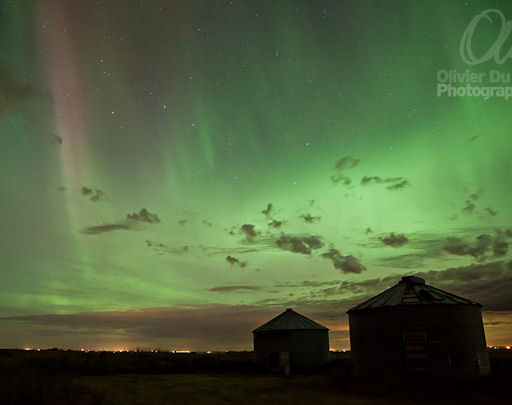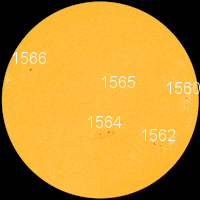SDO ECLIPSE SEASON: Twice every year, around the time of the equinoxes, Earth can pass directly between the Sun and NASA's Solar Dynamics Observatory (SDO), producing a series of beautiful eclipses from the point of view of the spacecraft. SDO's autumnal eclipse season begins on Sept. 6th. Stay tuned for some rare blackouts of the sun.
MAGNETIC UNREST: Earth's magnetic field is still reverberating from a pair of CME impacts--a relatively strong blow on Sept 3rd followed by a lesser hit on Sept. 4th. The double strike ignited auroras around the Arctic Circle that are only slowly fading. Olivier Du Tré photographed this apparition over Red Deer, Alberta, on Sept. 5th:
"For the second night this week, the Northern Lights put on an awesome show over Alberta," says Du Tré. "At one point about 65%-70% of the sky above the farmlands to the NE of Calgary were lit up. It was incredible."
NOAA forecasters estimate a 25% chance of strong polar geomagnetic storms on Sept. 6th as the reverberations continue. Aurora alerts: text, phone.

![]()
Solar wind
speed: 405.2 km/sec
density: 0.4 protons/cm3
explanation | more data
Updated: Today at 1527 UT
![]()
X-ray Solar Flares
6-hr max: C2 0810 UT Sep06
24-hr: M1 0413 UT Sep06
explanation | more data
Updated: Today at: 1500 UT
![]()
![]()
![]()
Daily Sun: 06 Sep 12
![]()
![]()
Sunspot 1564 is crackling with borderline M-class solar flares. Credit: SDO/HMI



